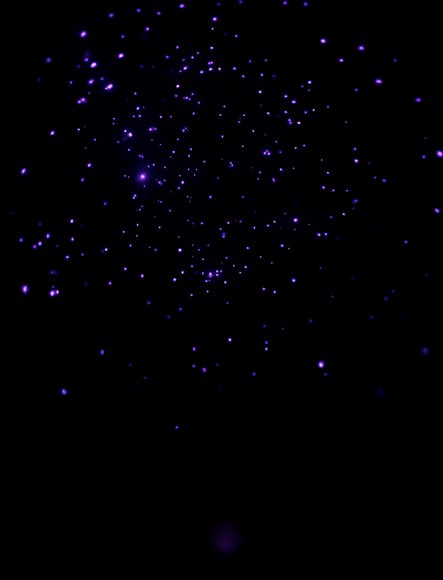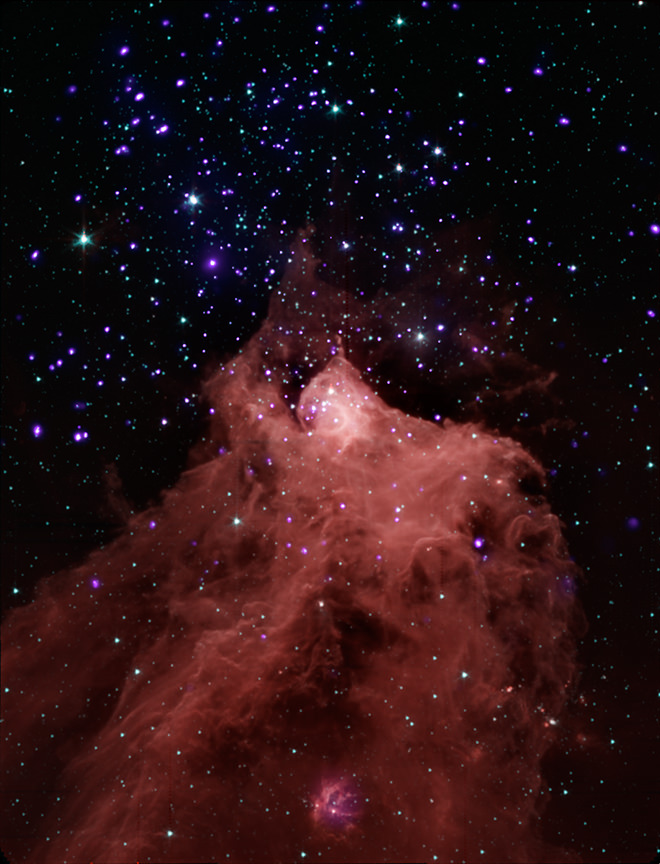[/caption]
Combining data from the Chandra X-Ray Observatory and the Spitizer Space Telescope allowed astronomers to create this gorgeous new image of Cepheus B. Besides being incredible eye candy, the new image also provides fresh insight into how some stars are born. The research shows that radiation from massive stars may trigger the formation of many more stars than previously thought.
While astronomers have long understood that stars and planets form from the collapse of a cloud of gas, the question of the main causes of this process has remained open.
“Astronomers have generally believed that it’s somewhat rare for stars and planets to be triggered into formation by radiation from massive stars,” said Konstantin Getman of Penn State University, and lead author of the study. “Our new result shows this belief is likely to be wrong.”

The new study suggests that star formation in the region of study in this image, Cepheus B, is mainly triggered by radiation from one bright, massive star outside the molecular cloud. According to theoretical models, radiation from this star would drive a compression wave into the cloud triggering star formation in the interior, while evaporating the cloud’s outer layers. The Chandra-Spitzer analysis revealed slightly older stars outside the cloud while the youngest stars with the most protoplanetary disks congregate in the cloud interior — exactly what is predicted from the triggered star formation scenario.
“We essentially see a wave of star and planet formation that is rippling through this cloud,” said co-author Eric Feigelson, also of Penn State. “Outside the cloud, the stars probably have newly born planets while inside the cloud the planets are still gestating.”
Cepheus B is a cloud of mainly cool molecular hydrogen located about 2,400 light years from the Earth. There are hundreds of very young stars inside and around the cloud — ranging from a few millions years old outside the cloud to less than a million in the interior — making it an important testing ground for star formation.
Previous observations of Cepheus B had shown a rim of ionized gas around the molecular cloud and facing the massive star. However, the wave of star formation — an additional crucial feature to identifying the source of the star formation — had not previously been seen. “We can even clock how quickly this wave is traveling and it’s going about 2,000 miles per hour,” said Getman.
The star that is the catalyst for the star formation in Cepheus B, is about 20 times as massive as the Sun, or at least five times weightier than any of the other stars in Cepheus B.
The Chandra and Spitzer data also suggest that multiple episodes of star and planet formation have occurred in Cepheus B over millions of years and that most of the material in the cloud has likely already been evaporated or transformed into stars.
“It seems like this nearby cloud has already made most of its stars and its fertility will soon wane,” said Feigelson. “It’s clear that we can learn a lot about stellar nurseries by combining data from these two Great Observatories.”
A paper describing these results was published in the July 10 issue of the Astrophysical Journal.
Source: Chandra


What… no comments yet?!
Well, like, er… cool pictures, Nancy!
Incredible image!! My first thought when i saw it was “That looks just like smoke being blown away” and when the article commented on a huge star pushing on the nebula, it made perfect sense.
Keep it up.